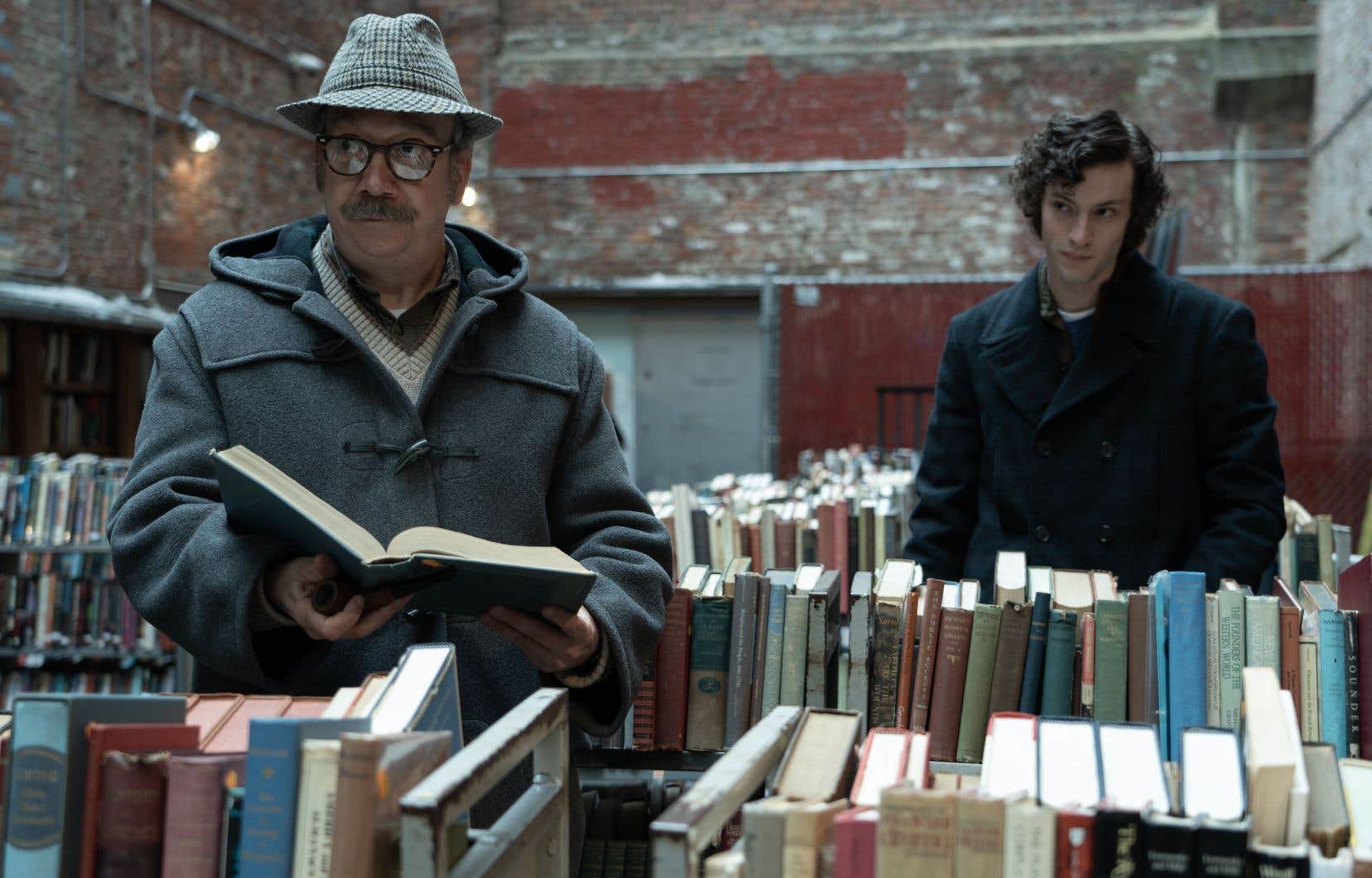We can be solitary by choice and still experience loneliness sometimes. In The Holdovers (Those who remain), by Alexander Payne, this is exactly what three disparate characters discover: a misanthropic professor, a student with a protest streak and an assertive cook. It’s the holiday season, a time of year when gatherings and gregariousness become obligatory figures. Brought together in spite of themselves, the protagonists will come to form an improbable trio, an improbable family.
A history teacher at a posh prep school, Paul looks down on his students, and vice versa. The prospect of seeing all these teenagers leaving for the Christmas holidays filled him with joy. Unfortunately for Paul, this year it falls to him to watch over the handful of students who cannot return home.
Ultimately, only one young person remains: the gifted but troubled Angus. And there’s Mary, the cook, who has her own reasons for not celebrating with her loved ones.
A traditional Hollywood film would have made a nice marshmallow out of all this. Very little for Alexander Payne, who avoids sentimentality by maintaining a half-sad, half-happy tone, of a kind that we rarely see anymore.
Payne doesn’t shy away from emotions, however. On the contrary, these occur in his films, but late, after much laughter and gnashing of teeth, when we no longer expect them, for a devastating effect. Let’s call this ” the uppercut emotional in Payne’. This is particularly true in The Holdovers.
With a brilliant screenplay co-written with David Hemigson, very freely inspired by Hake, by Marcel Pagnol (1935), Payne seems to have given himself the directive to “take the time”: the time to present, to accompany, then, gradually, to reveal his three characters; time to observe how their unforeseen connections will help them and transform them, just a little bit…
Ode to those left behind
The action takes place somewhere in the early 1970s, during a bleak winter. As he told us in an interview, Payne here pays tribute to his idol, Hal Ashby, director “ anti-establishment » of the New Hollywood to whom we owe in particular Harold and Maude (Harold and Maude1971), The Last Detail (The last chore1973), and Being There (Welcome Master Chance1979).
Thus, not only the action of The Holdovers set during the decade when Ashby made these masterpieces, but the film also has the formal characteristics of a production of that time (the font of the opening credits, the zooms, the crossfades, etc.).
Fortunately, Payne is too good to confine himself to pastiche or a superficial stylistic exercise. He also shares basic affinities with Ashby, starting with a predilection for antiheroes and all-round outsiders.
This is evidenced by the young pregnant drug addict used on all sides in Citizen Ruth (A capital subjectl), the pathetic teacher with the shoddy nobility in Election (Election), the cuckolded widower ofAbout Schmidt (Sir Schmidt), the two friends struggling with pinot noir in Sideways (Adrift), or the old man who persists in believing that he won the lottery in Nebraska.
Subtle and honest
The thick-shelled outcasts crossed in The Holdovers are, as we will have understood, characteristic of Payne’s work.
Paul has neither a partner nor children: school is all that matters to him, but his bitterness is ruining his life. Angus lost his father, but not in the way you might think. As for Mary, her only son perished in Vietnam.
Here again, a classic Hollywood approach would have favored tears and effusions.The Holdovers is more subtle, and above all more honest.
What’s more, beneath its retro surface, Payne’s film brews timeless themes: generational conflict, the horror of war, isolation, mourning, depression… We laugh about it, we cry about it. At the end, “ uppercut emotional” obliges, we find ourselves on the mat. And we are delighted.
